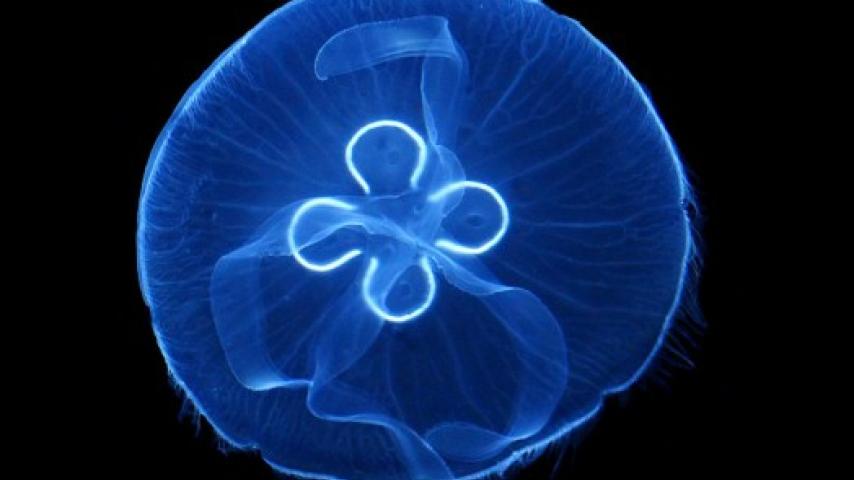Moon Jelly (Aurelia labiata)
The tentacles are covered with cnidocytes (nematocysts) that, when they contact potential prey, spring open and inject a poison dart into the animal, quickly paralyzing it.

KINGDOM Animalia - PHYLUM Cnidaria - CLASS Scyphozoa - ORDER Semaeostomeae - FAMILY Ulmaridae
Tiny crustaceans and other drifting planktonic animals are common prey, but fish are taken by larger species. The tentacles then contract, drawing the prey up to the frilly oral arms, where they are digested. Nutrients move from there through the entire body by diffusion.
Jellyfish have a hydrostatic skeleton, supported by the water within, that maintains their shape. They move by rhythmic pulsation of the bell, slowly pushing them through the water, but much of their lifetime movement is nothing more than drifting with currents. Sometimes this drifting brings many thousands together into the same area, producing a jellyfish bloom that may involve one animal per cubic meter over large stretches of ocean. These blooms may also be a consequence of unusually high prey concentrations that allow such high population density.
Moon jellies are among the most commonly seen members of this group. Almost transparent, they are made visible as they float by because of the four-leaf clover figure made by their four rings of gonads. Similar species occur throughout the oceans of the world, easily seen from docks and fishing boats and sometimes washing up on shore.
Jellyfish are fine examples of life cycles that involve alternation of generations, the polyp stage and the medusa stage. Although they all look the same, the sexes are separate. In most jellyfish, eggs and sperm are merely shed into the water during breeding episodes, but in moon jellies, the eggs lodge in the oral arms, where the planula larva develops.
The planula, covered with cilia that move it around, eventually settles onto a firm surface and develops into a polyp, an animal with a stalk, a mouth, and tentacles much like a tiny sea anemone. After a while, the polyp begins to bud, and it buds off tiny medusae, immature jellyfish that swim away and enter the plankton, starting the cycle again.
Jellyfish would seem to be uninteresting to predators, nothing more than a bag of water, but they apparently have enough nutrients in them to be valuable prey to such disparate animals as ocean sunfish and leatherback turtles. Even salmon eat some of them.